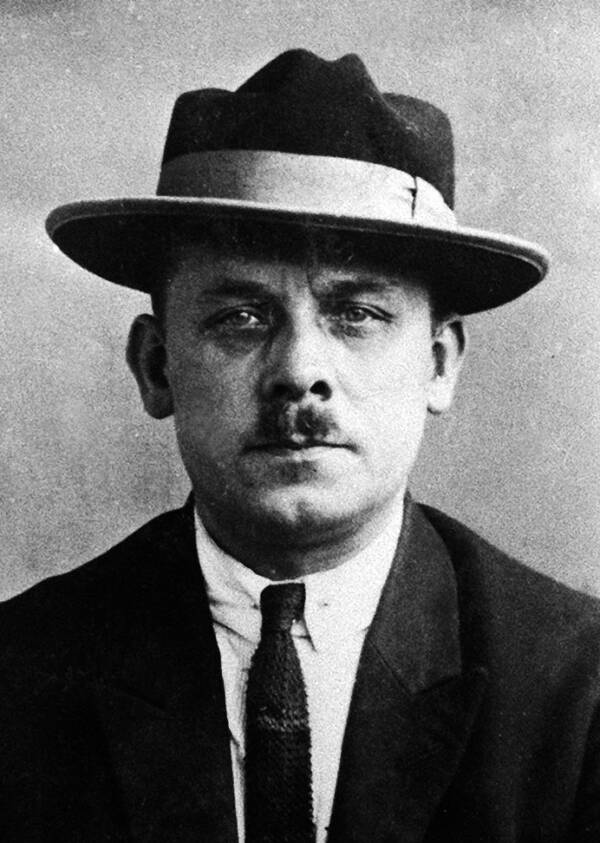The Vampire of Hanover

Fritz Haarmann was a German serial killer. He was known as the Vampire of Hanover, the Butcher of Hanover, and the Wolfman. A number of cases were registered against him, including murder, sexual assault, and sabotage.
He used to sell second-hand clothes and meat.
Before the cases were registered against him, he was considered a very noble and harmless person in the village. He was especially popular among the women of the village. The reason was that he sold clothes and meat at a very low price. He also worked as an informant for the police for a long time, which is probably why no one immediately suspected him.
Early Life
Fritz Haarmann was born on October 25, 1879, in Hanover. He was the youngest of six siblings. He liked to live separate from others. Apart from his siblings, he made almost no friends. He liked working with girls more than boys. Playing with dolls, wearing dress like his sisters etc.
In 1886, Haarmann began his schooling. He was an ideal student because of his behavior at school. But he was very weak in terms of studies. He often had to repeat his academic year. He left school in 1894 at the behest of his parents. He became a physically strong young man. After leaving school, at the age of 15, he enrolled in a military academy in the city of Breisach.
His parents thought it would be even stronger to go to a military academy. Shortly after enrolling in the military academy, he began having epileptic seizures. After a short time, he was discharged from the army. After discharged from the army, he also worked in his father's cigar factory for a few days, built by his father in 1888. For the first time since discharged from the academy, he raped a teenage boy. He was later arrested on further complaints of the same type but was soon declared a mental patient and admitted to a mental health institution.
Seven months later, Haarmann fled to Switzerland where he lived with a relative of his mother. Here he worked in the shipyard and also he got engaged to a woman named Erna Loewert, who soon became pregnant.
In October 1900, Herman received a letter from the Army recalling him.
Haarmann’s First Murder
In 1913, police imprisoned him for five years for stealing from a warehouse. He was released at the end of World War I. He met Grans in prison and soon the two had sex.
After his release from prison, Haarmann began working as an informant for the police. On September 25, a 17-year-old boy, Friedel Rohe, was reported missing. Upon investigation, Friedel's friends said they last saw Friedel with Haarmann. Police did not pay much attention to the statement. Because he was their informant. But under pressure from Friedel's family, they raided Haarmann's apartment. When police arrived at Haarmann's apartment, he was lying in bed with a 13-year-old boy, half-naked. While Friedel was not there.
Police arrested Haarmann, he was sentenced to nine months in prison for sexually assaulting a minor.
(Haarmann later said that when police arrived at his apartment, Friedel's head was wrapped in a newspaper behind the stove.)
Fritz’s Killing Spree
Haarmann was known in the market as a butcher. He was popular because of his eloquence and selling meat cheaper than others. After World War I, the world was in financial trouble. Everyone was fighting for their survival. The biggest problem for people was food. In the early 1920s, Haarmann spent most of his time near the Hanover train station. Due to the difficulties that came after the war, most of the children ran away from home. Haarmann would wait for such children and take them with him under the pretext of food and shelter. He would feed them, then rape them, and then cut their throats when they were full. Then he would cut their meat sell it as pork or beef. He used to throw bones and remains in a nearby river leine. He is said to have killed about 50 children and sold their meat before being arrested.
Discovery and Trial
On May 17, 1924, while playing on the banks of the Leine River, two children found a human skull. The police were informed. The police did not take them seriously. They said that it may have been the work of a dacoit or medical students.on The next day, while playing near a field, the boys found a sack containing human bones. When the Leine River was flooded on a large scale, many human skulls and bones were found in it.
Because the Hanover police were kind to Haarmann, instead of relying on the Hanover police, two detectives were sent from Berlin to investigate the case.
The Berlin detectives soon found Haarmann in a dark corner of the train station, attacking a teenager. He was thrown in jail while they went to search his apartment, much more thoroughly this time.
Inside was a nightmarish scene. The walls and floor were stained all over with blood, and more than 100 pieces of victims ’clothing were found.
In custody, the Vampire of Hanover was only too happy to confess to his crimes. When asked how many he’d killed, he casually replied: “Thirty or forty, I don’t know.” Later, he said he probably killed between fifty and seventy boys.
However, police were only able to identify 27 of his victims, from 1923-24 alone, and were unable to find the dozens of others. Haarmann was charged with multiple counts of murder and a trial date was quickly set.
In court, Haarmann smoked cigars and insulted everyone present. Once, looking at a photo of one missing boy, he shouted at the boy’s grieving father that he could never have had anything to do with the child as he was far too ugly.
Found guilty of 24 out of the 27 murders he was charged with, Haarmann was swiftly sentenced to be decapitated by guillotine on April 15, 1925.
After Haarmann's execution, parts of his brain were preserved for forensic analysis. However, Haarmann's head was preserved in formaldehyde and was occupied by Gottingen Medical School from 1925 to 2014.
The remains of Haarmann's victims, which were recovered, were buried together in a mass grave in Stöckener Cemetery in February 1925.
In April 1928, a large granite memorial in the form of a triptych, inscribed with the names and ages of the victims, was erected over the communal grave.

 My First News Item
My First News Item My Nine News Item
My Nine News Item